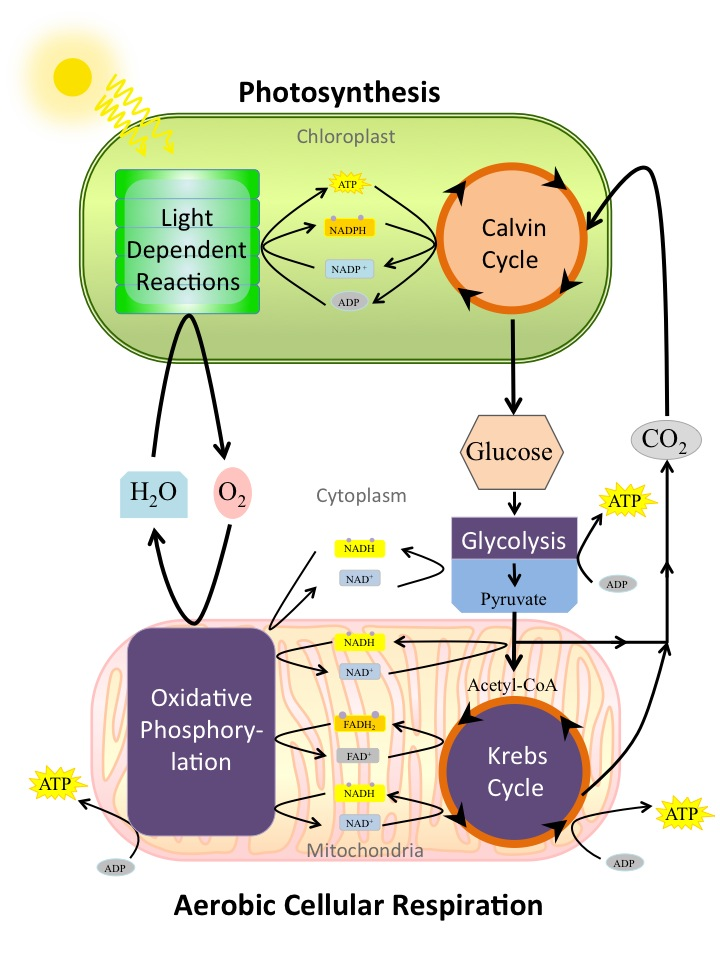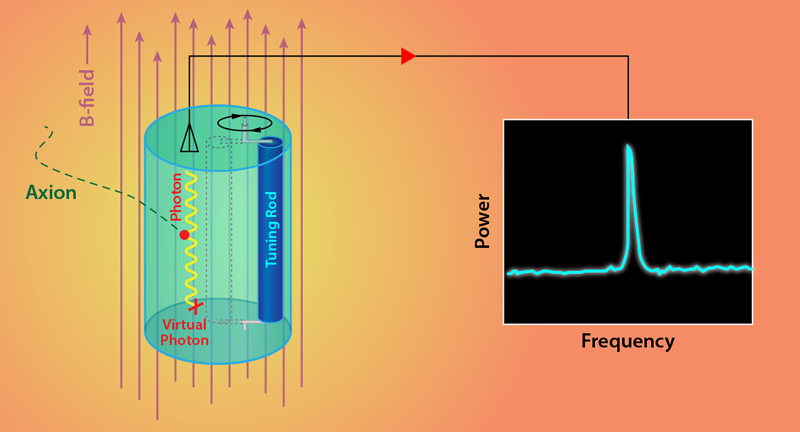Photosynthesis and aerobic metabolism are pivotal processes that govern the energy dynamics of life on Earth. At the heart of evolutionary biology lies the intriguing question of which of these processes arose first: the ability to produce oxygen through photosynthesis, or the capacity to consume it via aerobic metabolism. The Great Oxidation Event, a transformative era approximately 2.3 billion years ago, marked a significant increase in atmospheric oxygen levels, a direct consequence of cyanobacteria’s photosynthetic activity. This breakthrough enabled complex aerobic metabolism, allowing organisms to extract energy more efficiently. Understanding the evolution of photosynthesis grants us insight into the fundamental biochemical systems that sustain life and highlights the interconnectedness of these processes within the web of life’s evolution.
The interplay between light energy conversion and oxygen utilization shapes the ecological landscape of our planet. This relationship can be viewed through the lens of bioenergetics, where photosynthetic organisms, such as plants and algae, harness sunlight to generate organic compounds and release oxygen. Meanwhile, aerobic organisms, including animals and many bacteria, thrive by metabolizing this oxygen to release energy from food substrates. The historical context of these metabolic pathways reveals a rich tapestry of evolutionary adaptations, where the emergence of oxygen-producing organisms paved the way for the rise of oxygen-consuming life forms. Ultimately, the intricate balance of these processes not only fuels contemporary ecosystems but also exemplifies the intricate dance between life and its environment through the ages.
The Evolution of Photosynthesis: Origins and Mechanisms
Photosynthesis has undergone significant evolution since its inception, primarily driven by cyanobacteria around 2.3 billion years ago. This ancient process allowed these microorganisms to harness sunlight, carbon dioxide, and water to produce energy, releasing oxygen as a byproduct. This biological innovation not only sustained the organisms themselves but also transformed the Earth’s atmosphere during what is termed the Great Oxidation Event. This pivotal moment marked the transition to an oxygen-rich environment, which paved the way for aerobic organisms to evolve and thrive. The mechanisms behind photosynthesis have continued to adapt, shaping the diverse plant life we see today.
Understanding the evolution of photosynthesis involves examining various biochemical pathways and the molecular adaptations that have occurred over billions of years. Research into these pathways reveals how life forms developed effective strategies to harness solar energy. Modern studies, often highlighting specific components such as methyl-plastoquinone, suggest that even prior to the dominance of cyanobacteria in oxygen production, other organisms may have utilized different forms of photosynthesis. This insight not only enriches our understanding of evolutionary biology but also illustrates the complexity of interactions between different life forms during Earth’s formative epochs.
Aerobic Metabolism: The Role of Oxygen in Life
Aerobic metabolism is a critical biochemical process that allows organisms to utilize oxygen for energy production. Unlike anaerobic pathways, aerobic respiration is far more efficient, yielding significantly greater amounts of ATP, the energy currency of cells. This process is foundational to the survival of complex life forms, including plants and animals, enabling them to engage in the growth, reproduction, and maintenance of cellular functions. The emergence of aerobic metabolism coincided with the rise in atmospheric oxygen, a direct consequence of photosynthetic activity, creating a symbiotic relationship between oxygen producers and consumers.
The adaptation of cellular mechanisms to utilize oxygen effectively has been a significant evolutionary milestone. The study of aerobic metabolism reveals intricate biochemical pathways that differ across various species, including significant variations in mitochondrial quinones. These organic compounds serve as essential electron carriers in the electron transport chain, a crucial step in aerobic metabolism. Investigations into metabolic adaptations, such as those involving methyl-plastoquinone, illustrate how early forms of life may have had rudimentary systems to manage oxygen, prompting further evolution towards more complex aerobic pathways.
The Great Oxidation Event: A Turning Point in Earth’s History
The Great Oxidation Event (GOE), occurring roughly 2.4 billion years ago, signifies a crucial turning point in Earth’s atmospheric evolution. During this period, the activities of photosynthetic cyanobacteria dramatically increased the levels of oxygen in the environment. This transition from an anaerobic to an aerobic atmosphere not only altered the composition of the atmosphere but also had profound impacts on the evolution of life. Organisms that had adapted to utilize oxygen began proliferating, leading to increased complexity and diversity of life forms. This critical shift provided the foundation for the development of multicellular organisms.
Research suggests that the GOE was not merely a result of increased photosynthetic activity but also a complex interplay of various factors, including geological and biological changes. The emergence of aerobic metabolism allowed for the exploitation of newly available energy sources, leading to significant evolutionary advances. Moreover, the biological systems that evolved to process oxygen had to also mitigate the potential damage caused by reactive oxygen species. Understanding the intricacies of this period enhances our grasp of evolutionary biology, illustrating how pivotal moments can dictate the trajectory of life on Earth.
Methyl-Plastoquinone: A Bridge Between Photosynthesis and Aerobic Metabolism
Methyl-plastoquinone’s discovery represents a significant advancement in understanding the evolutionary link between photosynthesis and aerobic metabolism. Initially identified within bacteria, this molecule appears to function as a missing link, showcasing potential metabolic pathways that may have existed before the onset of widespread oxygen production by cyanobacteria. By exhibiting similarities to quinones used in photosynthetic processes, methyl-plastoquinone challenges the binary categorization of metabolic molecules, suggesting that simple and complex life forms may have shared metabolic precursors.
The implications of identifying such a molecule extend beyond the boundaries of individual species. It suggests that the evolution of life could be more interconnected than previously thought, with similarities in metabolic pathways enabling organisms to adapt to environmental changes. This not only enriches our understanding of biochemistry but also sheds light on the evolutionary strategies that allow organisms to manage oxygen use effectively. Ongoing research into compounds like methyl-plastoquinone may further unravel the complexities of life’s evolution, revealing insights into how early microorganisms managed to thrive in a transitioning planet.
The Interplay of Photosynthesis and Aerobic Metabolism
The interplay between photosynthesis and aerobic metabolism exemplifies the intricate relationships that define ecological systems. Photosynthesis contributes to the production of oxygen, which is essential for aerobic organisms that rely on this gas for energy production. However, the relationship is reciprocal; as aerobic organisms respire and release carbon dioxide, this CO2 can be harnessed by plants during photosynthesis. This cycle of energy transfer offers a glimpse into the interconnected nature of life and the delicate balance that sustains ecosystems across the globe.
Research on the connection between these two processes emphasizes the co-evolutionary pathways that exist in nature. For instance, as new forms of photosynthetic organisms evolved, they not only increased atmospheric oxygen but also pressured existing anaerobes to innovate and adapt to an oxygen-rich environment. This adaptation showcases the fundamental principles of evolutionary biology, where survival often hinges on the ability to coexist and evolve alongside other organisms. The mutual reliance on photosynthesis and aerobic metabolism illustrates how biological systems coalesce, driving the expansion and diversification of life.
Evolutionary Biology: Understanding Life’s History Through Metabolism
Evolutionary biology serves as a crucial framework for examining life’s history, particularly through the lens of metabolic evolution. The transition from anaerobic to aerobic life forms illustrates how organisms adapt in response to environmental changes, notably those driven by photosynthesis. The ability to utilize oxygen for energy production significantly influenced the course of evolutionary history, enabling species diversification and the emergence of complex organisms. Furthermore, the study of metabolic processes sheds light on the fundamental biochemistry that underpins life as we know it today.
The exploration of evolutionary biology extends into examining how specific metabolic pathways have developed over time. Research into ancient metabolic mechanisms, particularly those related to the use of quinones, reveals insights into the ancestral traits of contemporary organisms. By tracing the evolutionary lineage of metabolic processes linked to photosynthesis and aerobic respiration, scientists can better understand the adaptive strategies that have allowed life to flourish. This ongoing investigation deepens our appreciation for the intricate tapestry of life on Earth and our interconnectedness with all living beings.
Biochemical Systems: How Cells Manage Oxygen
Cellular biochemical systems play a pivotal role in managing the complexities associated with oxygen processing, particularly during aerobic metabolism. These systems are comprised of various enzymes and molecular pathways that minimize the potential damage from reactive oxygen species, which can arise during respiration. The evolution of these systems has allowed organisms to cultivate efficient methods for utilizing oxygen, thus enhancing metabolic processes without succumbing to the lethal consequences of oxidative stress. An understanding of these intricate chemical systems reveals how life has adapted over eons to navigate the challenges posed by changing environments.
The sophistication found within biochemical systems emphasizes the evolutionary pressures that have shaped life forms. For example, modifications to quinones and their roles in electron transport chains highlight how different species have innovated to maintain cellular integrity while maximizing energy output. Research into these biochemical pathways underscores the delicate balance that must be maintained within cells to ensure survival in oxygen-rich atmospheres. As we continue to elucidate these processes, it becomes clear that mastering oxygen utilization has been critical to the success and diversification of life on Earth.
The Legacy of Ancient Metabolic Pathways
The legacy of ancient metabolic pathways is evident in the fundamental biochemical processes that persist in modern organisms. From photosynthesis to aerobic respiration, these pathways have been conserved and adapted over billions of years, illustrating the resilience and versatility of life. Research has shown that many contemporary metabolic functions can trace their lineage back to early cyanobacteria and the first aerobic life forms that emerged post-Great Oxidation Event. Understanding this legacy helps scientists appreciate the evolutionary ties that bind all living organisms, regardless of their apparent differences.
Exploring the continuity of these ancient metabolic pathways provides valuable insights into the resilience of life. As environments change and organisms adapt, the underlying biochemical frameworks serve as the foundation for survival. These pathways not only highlight the evolutionary history of organisms but also enable scientists to draw connections between disparate life forms and their shared ancestry. As our exploration of these ancient pathways continues, it opens new avenues of research in fields ranging from evolutionary biology to biotechnology, shaping our understanding of life’s complexity.
Photosynthesis and Aerobic Metabolism: A Symbiotic Evolution
The relationship between photosynthesis and aerobic metabolism exemplifies a symbiotic evolution that has significantly shaped ecological dynamics on Earth. As photosynthetic organisms began to proliferate, they contributed to a substantial increase in atmospheric oxygen levels. This not only facilitated the evolution of aerobic metabolism but also created a shift in the ecological balance, allowing for greater diversity among life forms. The rise of oxygen-producing cyanobacteria introduced a new dynamic to Earth’s environment, effectively enabling multicellular organisms to emerge and thrive.
Moreover, the evolution of these processes illustrates the intricate connections between various biological entities in the ecosystem. The continuous cycle of oxygen production and consumption underscores the delicate balance maintained within food webs. As aerobic organisms evolved to utilize the oxygen generated by photosynthetic entities, feedback mechanisms may have also developed, fostering co-evolution between these critical processes. Understanding the interplay between photosynthesis and aerobic metabolism offers profound insights into the evolutionary history of life and the ongoing adaptations that shape our planet.
Frequently Asked Questions
What is the relationship between the evolution of photosynthesis and aerobic metabolism?
The evolution of photosynthesis is believed to have significantly influenced the development of aerobic metabolism. Photosynthesis, primarily performed by cyanobacteria, initiated the Great Oxidation Event around 2.3 billion years ago, producing oxygen as a byproduct. This rise in atmospheric oxygen allowed organisms to evolve aerobic metabolism, which is the process of using oxygen to convert food into energy.
What role did the Great Oxidation Event play in the evolution of photosynthesis and aerobic metabolism?
The Great Oxidation Event marks a pivotal moment in Earth’s history when oxygen levels rose dramatically due to photosynthesis by cyanobacteria. This increase in oxygen enabled the evolution of aerobic metabolism, allowing more complex life forms to thrive. Essentially, the ability to produce oxygen through photosynthesis set the stage for organisms to utilize oxygen for energy through aerobic processes.
How does methyl-plastoquinone connect photosynthesis and aerobic metabolism?
Methyl-plastoquinone is a molecule discovered in bacteria that share characteristics with quinones used in photosynthesis. This finding suggests a possible link between photosynthesis and aerobic metabolism, indicating that some organisms might have utilized oxygen even before cyanobacteria began producing it. This connection enriches our understanding of how metabolic systems evolved concurrently.
Did aerobic metabolism evolve before or after photosynthesis?
Current research suggests that aerobic metabolism and photosynthesis might have evolved simultaneously. While photosynthesis by cyanobacteria produced oxygen, the presence of molecules like methyl-plastoquinone in certain bacteria indicates that some forms of aerobic metabolism may have existed prior to or alongside the widespread oxygen production associated with the evolution of photosynthesis.
Can we consider photosynthesis and aerobic metabolism as parts of a single evolutionary process?
Yes, photosynthesis and aerobic metabolism can be viewed as interconnected stages of evolution. The ability to photosynthesize led to increased oxygen levels in the environment, which in turn facilitated the development of aerobic metabolism, allowing organisms to efficiently utilize this oxygen for energy. This intricate relationship played a crucial role in the diversification of life.
What insights do recent studies provide about the evolution of photosynthesis and aerobic metabolism?
Recent studies illuminate the complex connections between the evolution of photosynthesis and aerobic metabolism. For instance, findings related to methyl-plastoquinone reveal a shared evolutionary pathway for these metabolic processes, suggesting that organisms may have developed mechanisms to manage oxygen before large-scale photosynthetic oxygen production occurred.
How do aerobic metabolism and photosynthesis impact modern organisms?
Aerobic metabolism and photosynthesis are fundamental to modern life on Earth. Aerobic metabolism allows animals and other organisms to efficiently convert nutrients into energy using oxygen, while photosynthesis enables plants and algae to produce oxygen and organic matter, forming the basis of food chains. Together, they sustain the planet’s ecosystems and biogeochemical cycles.
| Key Aspect | Description |
|---|---|
| Photosynthesis | Process by which algae and plants convert sunlight, carbon dioxide, and water into energy, releasing oxygen as a byproduct. |
| Aerobic Metabolism | Process used by animals to consume oxygen, transforming food into energy and emitting carbon dioxide. |
| Evolutionary Question | Did photosynthesis or aerobic metabolism evolve first? This study hints that both may have appeared around the same time. |
| Methyl-Plastoquinone | A unique molecule that may link photosynthesis and aerobic metabolism, found in a nitrogen-utilizing bacterium during unrelated research. |
| Great Oxidation Event | A critical period when cyanobacteria began producing oxygen, enabling the existence of aerobic metabolism. |
| Role of Quinones | Quinones, utilized by all forms of life for metabolism, can be categorized into aerobic and anaerobic types, with methyl-plastoquinone representing a third category. |
| Research Significance | This research aids understanding of the biochemical evolution involving photosynthesis and aerobic metabolism, emphasizing the advanced nature of cellular systems. |
Summary
Photosynthesis and aerobic metabolism represent fundamental processes in the evolution of life on Earth. The key findings from recent research suggest that these two capabilities may have developed concurrently rather than one preceding the other. This groundbreaking discovery sheds light on how early life forms managed oxygen, leading to significant consequences for the diversification and evolution of species. Understanding the intricate relationship between photosynthesis and aerobic metabolism is essential for comprehending the Earth’s biological history.



